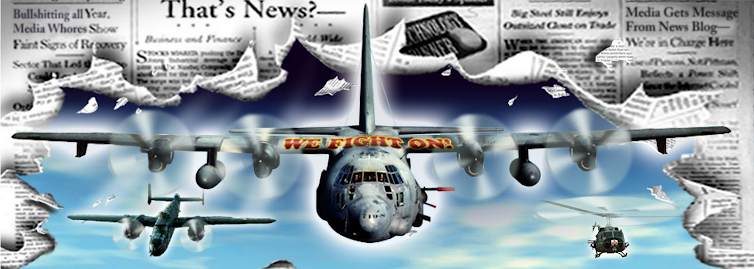(Colville-sur-Mer, American Cemetery, by Evan Robinson, Group News Blog)
Sixty-five years ago today (6 June 1944), the greatest armada ever assembled had crossed the English Channel in marginal weather and was disgorging its passengers into rough seas onto five beaches whose names should need no introduction: Utah, Juno, Sword, Gold, and Omaha. Nearly one hundred and fifty thousand men disembarked from ships, boats, and landing craft to begin a desperate assault on Hitler and Rommel's Atlantic Wall.
The French Remember.
More than fifteen thousand pathfinders, glider infantry, and paratroopers braved heavy weather and cloud cover to land behind the invasion beaches. Many were dropped miles from their planned drop zones, some in the ocean, some in the flooded areas of the Carentan Peninsula. They fought where they landed, self-organized and well-trained, taking objectives that should have been taken by other units, other men, at other times. They walked miles to their original drop zones so that they could take their own objectives. They coalesced as if by some primitive magic, drawn together by their crickets, their countersigns, the sounds of battle, and the terrain itself.
The French Remember.
 (Unknown Grave, Colville-sur-Mer, American Cemetery, by Evan Robinson, Group News Blog)
(Unknown Grave, Colville-sur-Mer, American Cemetery, by Evan Robinson, Group News Blog)Fifty thousand Americans landed at Omaha Beach to face the low-grade 716th German Infantry Division and instead found the superior 352nd. Five thousand troops were killed or wounded at "Bloody Omaha", and it took three days to achieve the planned progress for the first day. There are people who say today that the stones of Omaha Beach bleed red. I stood at Omaha Beach last month and listened to the wind and the waves and tried to imagine what that day might have been like. I couldn't.
The French Remember.
 (American Flag flying over Colville-sur-Mer, American Cemetery, by Evan Robinson, Group News Blog)
(American Flag flying over Colville-sur-Mer, American Cemetery, by Evan Robinson, Group News Blog)Above Omaha Beach, at Colville-sur-Mer, fly two American flags. They fly above 9387 American graves. Three hundred and seven of those graves hold unknowns. There are 33 pairs of brothers. Every year 1.4 million people visit Colville Cemetery. Sixty percent of them -- over 800,000 -- are French. About half that many Americans visit, and many of them are military stationed in Germany. This year, President Obama visited Colville and spoke at the sixty-fifth anniversary ceremonies.
The French Remember.
 (Stained Glass Window, Ste. Mere Eglise,, by Evan Robinson, Group News Blog)
(Stained Glass Window, Ste. Mere Eglise,, by Evan Robinson, Group News Blog)As you drive through the Normandy countryside, nearly every little village has its memorial, its monument, and its American flags. There are churches with paratroopers in their stained glass and bloodstains from the wounded still visible on the wooden pews. There are ticky-tacky souvenir stores and there are somber museums and there are graveyards and there are signs and there are American flags everywhere.
The French Remember.

(Stained Glass Window, Carentan Peninsula, by Evan Robinson, Group News Blog)
At Pointe du Hoc, American Rangers scaled sheer cliffs to attack a German battery position which held no guns. Of 225 Rangers landing, only 90 were battle-ready two days later. The crumbling cliffs at Pointe du Hoc today hold a memorial which is unsafe to visit -- a dagger handle dug into the cliffs where the Rangers "led the way."

(Pointe du Hoc, Carentan Peninsula, by Evan Robinson, Group News Blog)
The French Remember.






|